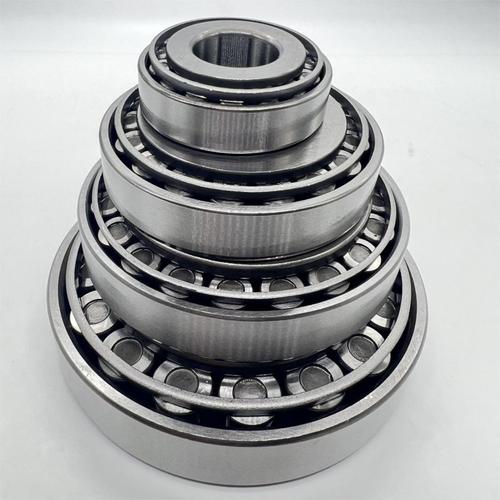Common Tapered Roller Bearing Failure Examples and How to Prevent Them
Introduction
Tapered roller bearings are critical components in various industrial applications, from automotive to heavy machinery. Understanding tapered roller bearing failure examples is essential for maintaining equipment efficiency and longevity. This article explores common failure modes, their causes, and practical solutions to prevent costly downtime.
Definition and Function of Tapered Roller Bearings
Tapered roller bearings are designed to handle combined radial and thrust loads. Their conical geometry allows for efficient load distribution, making them ideal for high-stress applications. However, improper use or maintenance can lead to various failure modes that compromise performance.
Common Tapered Roller Bearing Failure Examples

1. Fatigue Spalling
Fatigue spalling appears as surface material flaking off the raceways or rollers. This occurs due to repeated stress cycles beyond the bearing's capacity. Proper load calculation and timely replacement can prevent this failure mode.
2. Brinelling
Brinelling shows as indentations on raceways, often caused by impact loads during installation or operation. Using proper tools and techniques during bearing mounting can avoid this damage.
3. Overheating and Discoloration
Excessive heat causes bearing components to change color (blue or brown tints) and lose hardness. This typically results from inadequate lubrication or excessive preload. Maintaining proper lubrication levels is crucial.
4. Contamination Damage
Foreign particles entering the bearing create dents and grooves on rolling surfaces. Effective sealing systems and clean handling procedures minimize contamination risks.
5. Misalignment
Improper alignment causes uneven wear patterns across the bearing width. Precision mounting and regular alignment checks ensure proper bearing operation.
Prevention and Maintenance Strategies
Regular inspection, proper lubrication, and correct installation techniques significantly reduce tapered roller bearing failure risks. Implementing predictive maintenance programs helps identify issues before catastrophic failures occur.
Our Bearing Solutions
We offer high-quality tapered roller bearings designed for durability and performance. Our technical team can help select the right bearing for your application and provide expert maintenance advice to extend bearing life.
Frequently Asked Questions
What are the first signs of tapered roller bearing failure?
Unusual noise, vibration, or increased operating temperature often indicate early-stage bearing problems.
How often should tapered roller bearings be lubricated?
Lubrication intervals depend on operating conditions but typically range from 3-6 months for standard applications.
Can damaged tapered roller bearings be repaired?
While minor surface damage can sometimes be polished, replacement is usually the most reliable solution.
What causes premature tapered roller bearing failure?
Common causes include improper installation, contamination, inadequate lubrication, and overload conditions.
How can I extend my tapered roller bearing's service life?
Proper installation, regular maintenance, correct lubrication, and avoiding overload conditions significantly extend bearing life.
Conclusion
Understanding tapered roller bearing failure examples helps prevent costly equipment downtime. By recognizing early warning signs and implementing proper maintenance practices, you can maximize bearing performance and longevity. Contact our experts today for personalized bearing solutions tailored to your specific needs.




 13869596835
13869596835